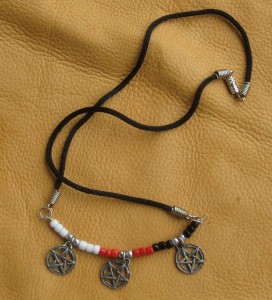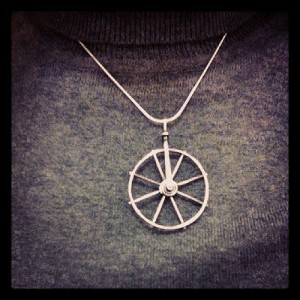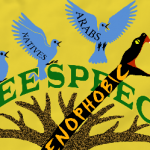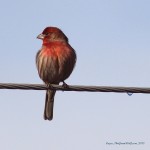To our readership: I’ve been rather busy as of late, and haven’t had as much time for writing. I’ll be back to it soon enough, but in the meantime I wanted to share something I wrote two years ago over on my personal blog. It’s a concept for which I’d like to see get more exposure and feedback; paganism often tends to go to many of the same sources over and over again for inspiration, and in my studies and practices in ecopsychology I’ve found a wealth of useful material for my path. Here’s one gem I’d like to share with you:
**********************

I’ve always had issues with the “Maiden, Mother and Crone” triad (which shall be referred to as MMC from here on out) in neopaganism. It stems from Robert Graves filtered through Wicca, but seems to have bled over into generic neopagan lore. While originally it was intended to describe certain supposed trinities of goddesses, it has since been applied erroneously to human women as well. Neither deities nor humans seem to do so well when shoved into archetypal pigeonholes–while I may see totems as archetypal in nature, it’s as representations of all qualities and associations of their given species, not as “Brown Bear is the Healer, Grey Wolf is the Teacher”, etc.
It’s the humans in specific I’d like to talk about here. As someone who is deliberately childfree, I already have reason to dislike the MMC’s focus on the uterus and its functions as defining characteristics of what it means to be female [2012 note – never mind the outdated limitations of “woman” as being defined as “has a uterus”]. I used to subscribe to that whole concept that “fertility” could be symbolic as well, dealing in creative endeavors like artwork as one’s “children”. But that still limits women to “creative”, “fertile” and “nurturing” roles–as I mentioned to someone on my Twitter account, what about “Little Hellion”, “Hostile Corporate Takeover Organizer” and “Crazy Cat Lady With Attack Bengals” as archetypes? These are pretty limiting, too.
And then there are the awkward attempts to shoehorn men into similar categorizations, like “Youth, Warrior, Sage”, which at least have a little less dependence on the functionality of one’s reproductive organs, but are still unnecessarily limiting.
And this led me into irritation and annoyance with the whole gender binary thing and the Western adherence to strict dualities which seems to be especially pronounced in the States.
And then I got pissy about people mistaking the map for the territory.
And then I decided to finally write this damned essay, which has been bouncing around in my head half-formed for gods know how long.
See, I was changed a few years ago when I read Bill Plotkin’s Nature and the Human Soul. It’s not as well-known or appreciated as its predecessor Soulcraft, but it was a really formative book for me. That’s where I first learned about the concept of ecopsychology, which isn’t so much a specific school of psychological thought as it is an approach to both theroetical and applied psychology that automatically factors in the human relationship to nature along with relationships to the self, other humans, etc. It ties in beautifully with animistic beliefs and practices and gives additional structure to these concepts. In fact, a number of ecopsychologists employ core shamanic techniques in their clinical practices. And this was the book that led me to research local graduate school programs to find whoever had ecopsych classes available, which in turn completely changed my life on a lot of levels.

Anyway, what makes this book pertinent here is that Plotkin has designed what’s essentially an ecopsychological developmental theory. The book focuses on what he has labeled “The Wheel of Life”. It’s modeled on Erikson’s eight stages of human development. However, where Erikson’s stages are largely tied to one’s neurological development and, to a lesser degree, chronological age, and also are weighted more heavily toward children and adolescents as developing human beings, Plotkin’s eight stages are not so strictly scheduled, and in fact a person may not necessarily go through all eight even in a natural lifespan. While the stages do correspond to Childhood, Adolescence, Adulthood and Elderhood (as Plotkin terms them), these are more based on psychological maturity than physical age. A person may be well into physical adulthood, but still be somewhere in one of the two Adolescent stages in Plotkin’s model.
Additionally, the tasks that Plotkin proposes for each of the eight stages are much different from the tasks Erikson described in his model. Where the latter is based primarily in self-development focusing on life as part of human society, Plotkin creates a connection between the internal and external environments, as well as the human and nonhuman components thereof. There’s also a strong element of the Hero’s Journey, albeit without Campbell’s gendered interpretation thereof, in the development of the human being in the Wheel of Life. In fact, it’s entirely gender-neutral, which I thoroughly appreciate.
It’s a wonderfully pagan developmental model, though it’s not at all religious. I tend to recommend ecopsychology as a resource for nature-based pagans because it synthesizes psychology with mythology, spirituality (without specific religious trappings) and, of course, ecology. Again, it doesn’t espouse a specific school of thought; one culture’s mythology is not seen as superior to another’s. Rather, the function of mythology (and the other elements of ecopsychology) is what is explored and applied–similar to how I work with the function of shamanism in my culture rather than any prescribed, specific type of shamanism.
I would like to propose the Wheel of Life as an alternative human developmental model in neopaganism, replacing the constricted, outdated, and ultimately historically inaccurate MMC triad. This goes for any and all derivatives, which are necessarily based on a flawed system. I haven’t used it nearly as much as I would like, but it’s something that I have integrated into my personal, private view of myself for a while now. Nature and the Human Soul is still in print, and I can’t recommend it enough, whether as an alternative to the MMC, or simply as an effective structure for greater understanding of the self.















